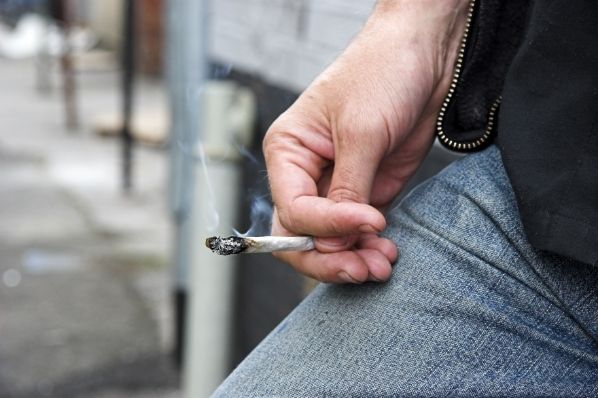So that’s why they call it higher education.
More than one in 20 college kids are smoking pot daily. According to researchers at the University of Michigan, that’s the highest rate since the “Monitoring the Future” study began in 1980.
Almost 40 percent of students reported using some sort of illicit drug during the previous year, up from 34 percent in 2006. And most of that boost is thanks to pot.
“There’s no question that marijuana use has risen considerably,” Lloyd Johnston, the study’s principal investigator, told The Wall Street Journal, adding, “In December, we released results on secondary-school students, and we’re seeing a rise in daily marijuana use there as well.”
But really, what’s the big deal? And what did we expect?
The push for legalization around the country has had an effect on how young people view pot. If it’s legal in Colorado, say the kids in New Jersey, how bad can it really be for me? And it’s only a matter of time before it’s legal everywhere, right?
And, just as with alcohol and tobacco, the easier it is for grownups to get a hold of it, the easier it is for kids as well.
Ed Gogek, an addiction psychiatrist who has been practicing for more than 30 years, notes that many teens and young adults simply don’t understand the risks associated with marijuana use. He cites research performed at the University of Maryland showing that “college students who use marijuana even occasionally do worse in school, do less homework, are less likely to finish college and are more likely to be unemployed at some time in their lives.”
In his book, “Marijuana Debunked,” Gogek suggests that the media has been complicit in persuading young people that smoking pot is no more harmful than downing a couple of beers.
But young people with any kind of ambition might want to look at the facts. A long-term study in New Zealand found that people who smoked heavily in their teens and continued into adulthood lost an average of eight IQ points by age 38. Medical authorities seem to agree that while the brain is developing until at least the age of 21, the effects of marijuana can be harmful and permanent.
But in his book “The High Road,” Samuel Vickovic, a doctoral student in criminal justice at Arizona State, found that two-thirds of news stories about medical marijuana were positive. And Gogek notes that marijuana use can fluctuate significantly depending on this coverage. “Adolescent use increases when perception of harm goes down and vice-versa.”
But the use of marijuana isn’t spread evenly. There may be a number of places to buy pot in Aspen now, but it’s mostly the lower-income and unemployed who are indulging regularly.
In other words, it’s hard to find middle-class professionals lighting up on a daily or even weekly basis even now that it’s legal. Among teens and college students, pot use may be spread more evenly across the economic spectrum, but it’s not usually the kids who are headed for graduate school and good careers who are being tripped up by it.
In a book called “Paying for the Party: How College Maintains Inequality,” Elizabeth A. Armstrong and Laura T. Hamilton document how students who are on the “party pathway” at a large Midwestern institution find that they can drink and use drugs and join fraternities all while taking easy majors, knowing that their parents will bail them out.
But the less affluent students — those who want to be on the “mobility pathway” — will often find themselves caught up in that party atmosphere and realize too late that no one’s there to save them. Of the lower-income students Armstrong and Hamilton follow, none graduate within five years.
The growth in pot use on campus may simply be a sign that students have too much time on their hands. If you’re only studying and going to class an average of 25 hours a week, what in God’s name are you going to do with the rest of your time? But for the kids who are actually on campus to improve their chances in life, the growing popularity of marijuana on campus is just one more obstacle in their way.
Naomi Schaefer Riley is a senior fellow at the Independent Women’s Forum.


